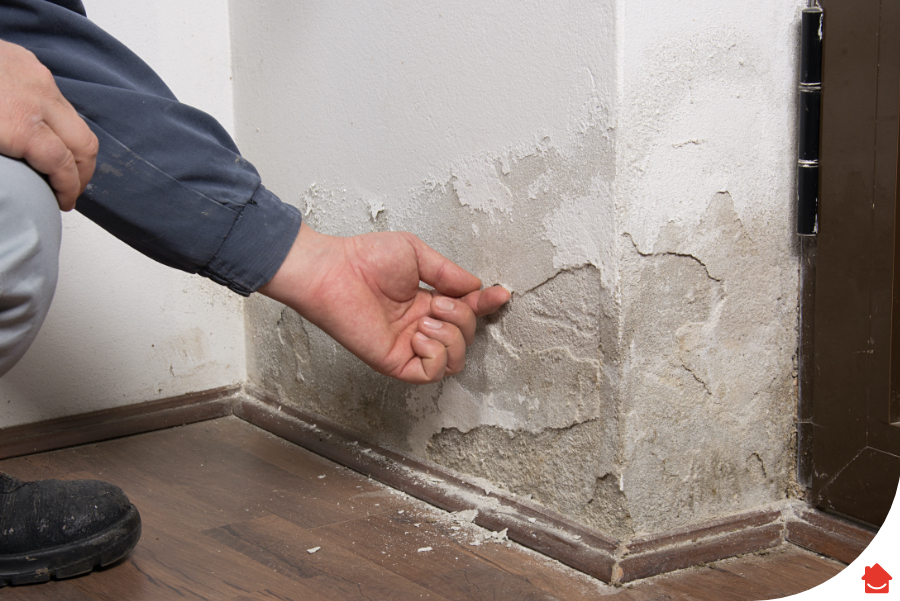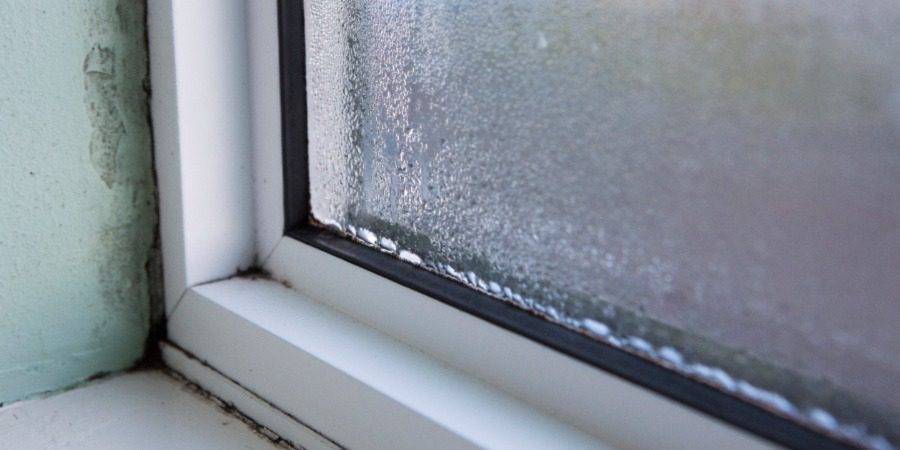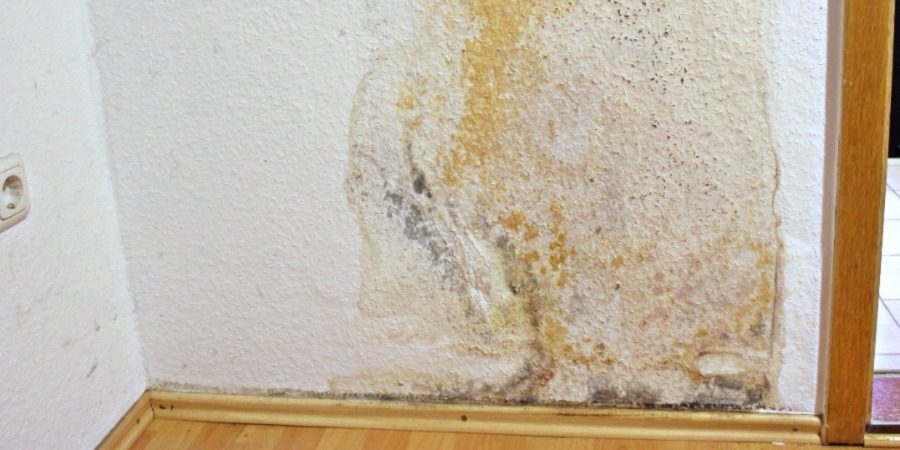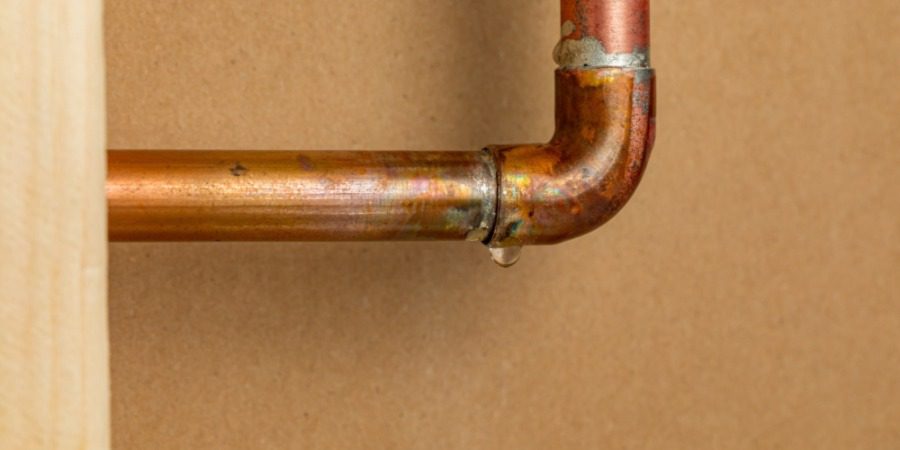Home maintenance advice
How to treat damp walls before painting
23 Jul 2021 • 10 minutes


One of the most common and costly DIY mistakes you can make is painting over damp walls or ceilings. Inevitably, the paint bubbles and peels, putting you right back where you started.
The good news is that damp can often be treated, DIY-style, without having to call in the professionals. There are also a few very noticeable clues of developing damp that you can watch out for, and simple methods to try to stop it from making a reappearance.
In this guide, we’ll show you how to identify damp, fix the cause and treat your walls so that you can fully relax in your home knowing it’s sorted.
Damp is a common problem in all types of home, whether you’re a homeowner, a landlord or a renter. Damp can make your home feel cold, unwelcoming and unhealthy. It’s also a cosy breeding ground for mould, which can be risky to your health.
Damp is essentially unwanted moisture that makes its way into structures over time. There are three main types of damp, which we’ll go into, along with how to spot each one and the best ways to fix it.
In short, yes. Damp, left unchecked, can be disastrous for your property (and finances) if you’re a homeowner or landlord, and it can also be hazardous to your health if you’re a homeowner or renter.
Water slowly erodes a building’s structure, rots timber and creates the perfect environment for potentially damaging mould to grow. If your property has any kind of mould problem caused by dampness, follow our in-depth guide for a number of different solutions on how to get rid of mould.
These are just some of the reasons why we strongly recommended that you don’t just simply paint over damp walls without fixing the problem first.
Yes, there are three main types of damp that you can find in your household:
You’ll need to know which you have in order to treat it properly, but it is important to keep in mind that it is possible for more than one type of damp to be present in your home.

Condensation is a very common type of damp that can often invite mould into your bathroom or kitchen if you have poor ventilation. Condensation might also build up on exterior walls where it tends to be colder.
You’ll be able to see beads of water on the wall’s surface and the dampness may be noticeable to the touch.
Condensation is the easiest damp problem to fix. It can often be solved cheaply and quickly, without the need for professional help.
Improving your home’s ventilation can help completely clear condensation. Effective measures include:

Rising damp usually occurs in homes that are older – built in the early 20th century or even older. Damp simply rises up from the moist soil underneath the property and into the footings and foundations of the ground floor of houses.
More modern properties are built with damp-proof courses, which is a waterproof membrane that acts as a barrier between the soil and the house. Without a damp-proof course, older houses that are renovated with modern plaster, insulation, windows and doors, become very moist places indeed – the moisture gets trapped in the walls, et voilà! You have a rising damp problem.
Rising damp creates visible stains, even tidemarks on your walls. You can also get mould growing in corners.
If you’ve got a significant rising damp problem, consider installing a modern damp-proof course. Whilst it might be expensive, it will help you prevent any further deterioration to the walls over time. It’s best to consult an expert if your problem is this severe.
If you’re lucky enough to have a milder case of rising damp, you can treat it in a similar way to condensation – ventilate, dehumidify, have your boiler on a lower setting for longer, and consider a positive ventilation system.

Penetrating damp happens when water gets through your exterior walls and penetrates the inside walls. This may be caused by issues such as a leaking roof, due to broken or loose tiles, a broken or blocked gutter, damaged exterior walls, or even leaking pipes.
Penetrating damp often shows up suddenly as a damp patch on the inside of an exterior wall. It may also show higher up on a wall or even on your ceiling. There may be watermarks and some noticeable damage to your plaster.
Find out the source of the problem – whether it’s your exterior wall, roof, gutter or pipes – and get it fixed as soon as you can to stop water from making its way into the walls.

Pipework does have a lifespan and if yours is old or loose somewhere it can cause a leak. This may be a full-on gush or a slow trickle.
Damp from leaking pipes is similar to penetrating damp: it can show up suddenly as a visible damp patch on a ceiling, or underneath a fixture like a radiator or a sink. You might be able to solve any common water leaks at home by yourself, but more complex piping issues may need to be looked at by a plumber.
You can often see or smell if you have damp most obviously in the winter, but there are less obvious warning signs you can look out for too:
Hold your hand against the wall. Does it feel cold or damp to touch? Flaking paint or curling wallpaper can be a dead giveaway. Mould shows up on painted and wallpapered walls and woodwork as black spots or grey growths.
Look for brown patches or stains on the ceiling – this is a telltale sign of a leak. Look for black speckles of mould.
Check your windows in the morning. Do they have condensation on them along with small puddles of water on the window sills? You can also get a build-up of black mould along the silicone sealant of the window frame.
Your grouting and sealant are the first port of call for mould. Thoroughly check inside cabinets and cupboards for stains, damp smells and mould.
Damp and mould love a tasty fabric. Check the inside of your curtains and blinds, and upturn your sofa to have a thorough inspection of the inside and the back of it.
If you haven’t been down there in a while, prime your nostrils for getting a whiff of a musty smell. It’ll be fairly obvious if it’s an enclosed space. Also, check for stains and mould on walls and woodwork.
A common error that homeowners make is to mistake a damp problem for a ventilation or condensation problem.
A damp problem is typically accompanied by condensation, as damp ramps up the level of moisture in the air. It’s not enough just to fix your ventilation if you have an unidentified damp problem; it’ll continue to wreak havoc on your property until you sort it out.
No. Never paint over damp. Damp is caused by a variety of structural failures, as detailed above, none of which can be fixed by painting over them. You must fix the underlying issue first.
Painting over damp materials allows the damp to continue to cause damage right underneath the lovely fresh layer of paint.
Taking the time to fix a damp problem is essential not just for homeowners and landlords, but for anyone who is living in the property due to the effects it can have on your health if left untreated.
Here are 6 steps to treating mould and damp on walls so that you have a clean slate and a beautiful home.
Use our guide above to properly diagnose the type of damp you’re dealing with. Check walls, ceilings, pipes, gutters, basements, and under sofas – basically, leave no stone unturned.
Whether it’s a leak, a blocked gutter, or a sorely needed damp-proof course, once you’ve cut off the source of the damp, the rest of the steps will be easy.
Once you’ve eliminated the source of the damp, your walls will need time to fully dry before you treat them. Ventilation is key – and a dehumidifier may be necessary.
You’ll soon start to see visible improvements like wet patches fading. Hallelujah! You may be left with peeling wallpaper, tidemarks, stains or bubbling paint, but at least you can now tackle the aesthetics knowing you’ve fully fixed the damp.
Once your surface is dry, repair any cracks and holes with wall putty, and sand it down until it’s smooth. Then paint it with a damp seal or a stain blocker paint so that any staining doesn’t penetrate through your next layers of emulsion.
Perhaps you’ll want to add a waterproofing coat to your walls to avoid damp rearing its head again in the future, especially in kitchens and bathrooms. You can buy specialist primers for kitchens and bathrooms, that do exactly this.
Got damp-free, mould-free, dry and water-proofed walls? Now, you’re ready to paint. Phew!
You have to identify the source of the damp first – whether it’s condensation, rising damp, penetrating damp or a leaking pipe – so you know exactly how to fix it. This may mean simply ventilating your home better or you may need more drastic measures like fitting a damp-proof course to prevent rising damp.
No. Never paint over damp – it doesn’t address the root cause of bubbling paint or peeling wallpaper, and you’ll need to paint it again very soon. Fix the source of the damp then let the wall fully dry out before painting it.
If your damp is mild and is caused by inadequate ventilation, then opening windows may completely solve your problem. However, damp patches can indicate a more serious issue that needs a bit more work, as simply opening a few windows won’t solve it.
Although damp can be time-consuming to fix and treat, it’s very doable using the steps above. Once you’ve really, truly eliminated the source of the damp, you probably won’t have to do it again, but if you’re a landlord with one or more properties to look after, you may want to consider our landlord cover if any leaking pipes or boiler problems occur, you can relax knowing we’ve got you covered. This makes it easier to manage any unexpected problems and expenses that may arise and help prevent mould from becoming an issue in the future.
Our help & advice articles cover Plumbing, Home heating, Electrical, Energy-saving and Home maintenance.